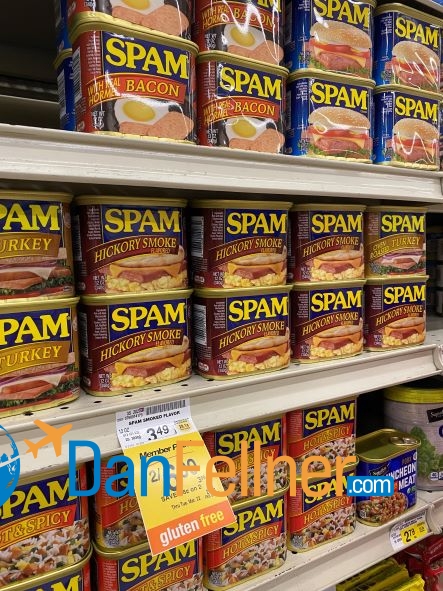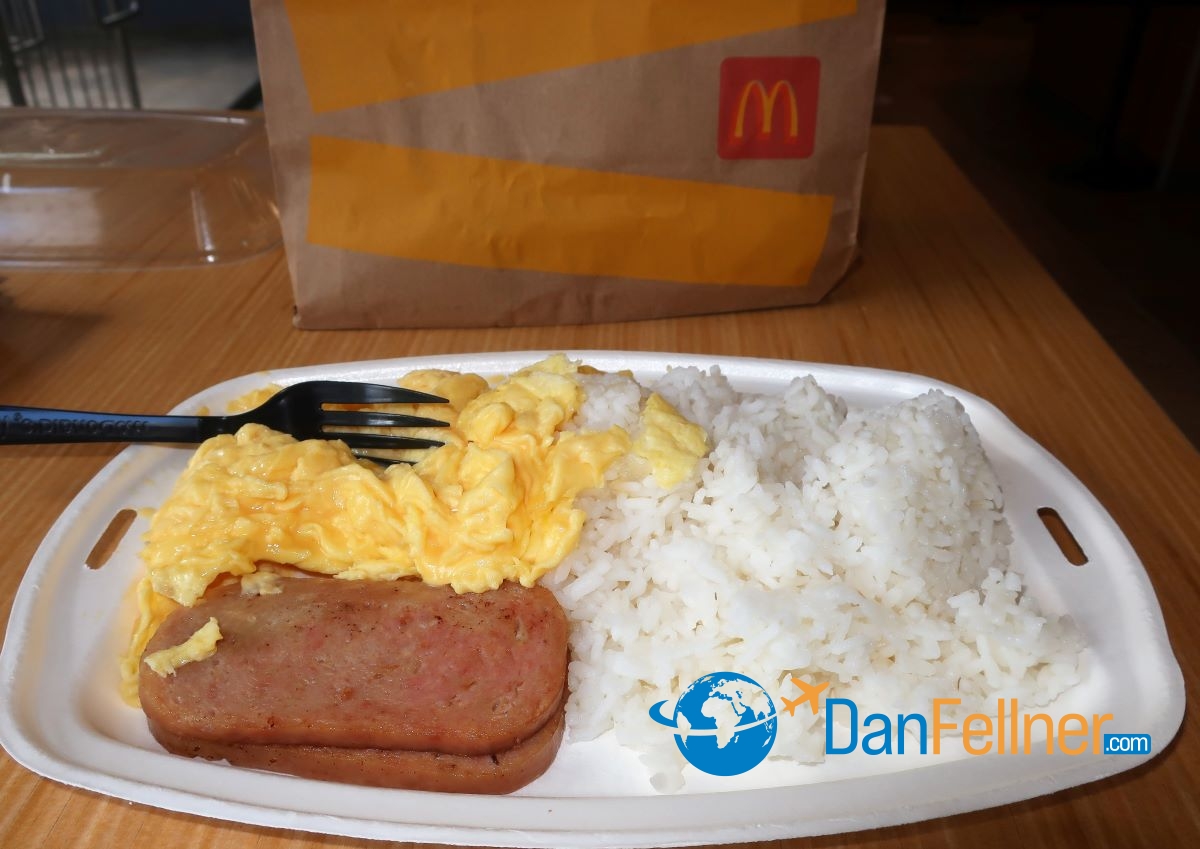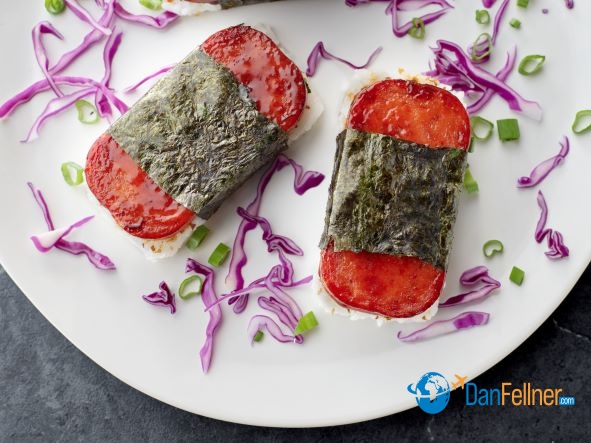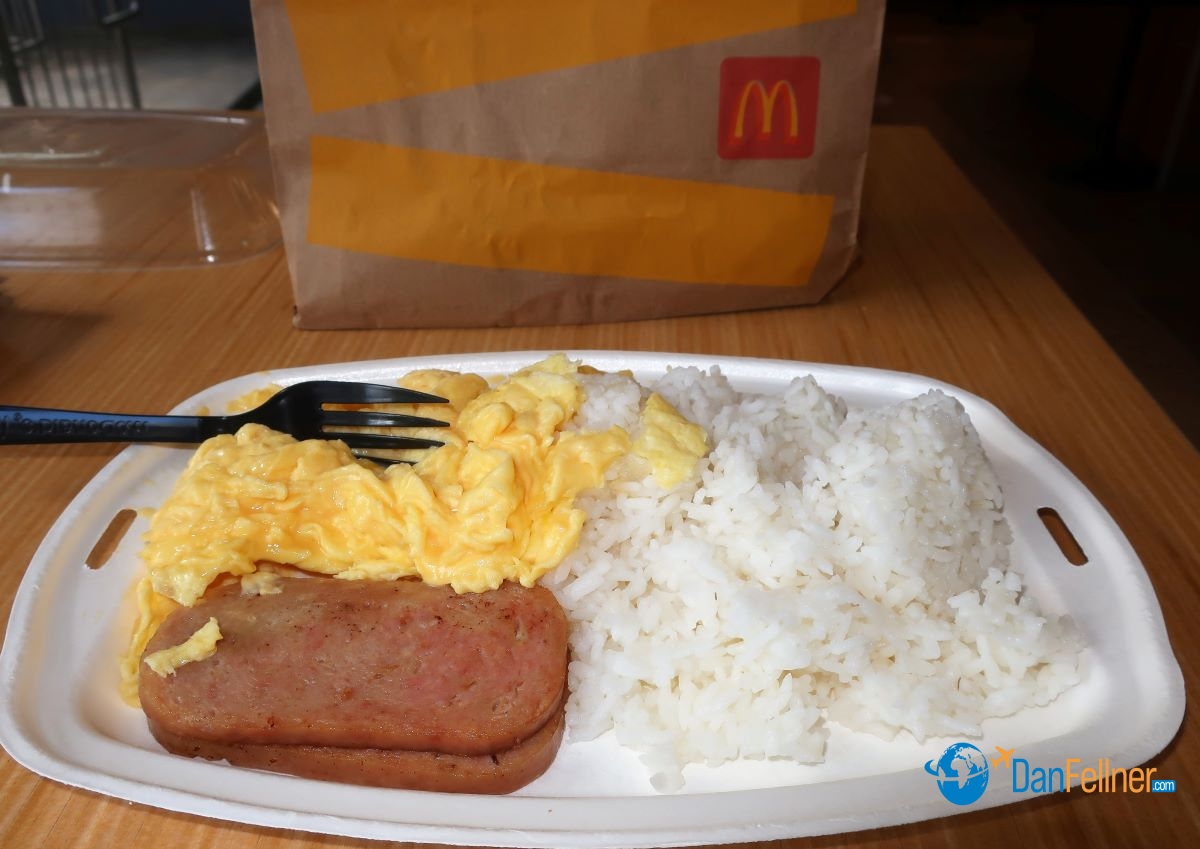Hawaii’s residents devour the much-maligned meat
March 17, 2022
HONOLULU – There’s an old proverb: “One man’s trash is another man’s treasure.”

Spam for sale at a Safeway in Honolulu
I certainly wouldn’t equate Spam with trash. But consuming the canned mystery-meat has about as much appeal to me as a week-old Costco hot dog.
In Hawaii though, the state’s residents view Spam in a far more favorable light than most mainland Americans.
It all started during World War II when Spam was introduced to feed U.S. military personnel stationed on the islands. The product — manufactured at Hormel plants in Minnesota and Iowa — worked well as a wartime staple because it didn’t require refrigeration and had a long shelf life.
Ever since, the cooked pork product has been an integral part of the local diet, even earning the moniker “Hawaiian steak.”
Hawaii’s residents eat 7 million cans of Spam each year, the highest per capita consumption rate in the country. If you do the math, it averages out to about five cans per person.
That’s five more cans than I typically consume.
At no time was the state’s infatuation with Spam more apparent than in 2017, when stores on the islands were hit with a rash of Spam thefts. Authorities said the stolen Spam was used by drug dealers as a form of currency. The problem became so bad that some stores actually started keeping cans of Spam in locked display cases.
I spoke about Hawaii’s love of the much-maligned meat with Kainoa Delacruz, who has been lecturing about Hawaiian culture on cruise ships for 20 years. I sat down with Kainoa following one of his presentations on the Holland America Koningsdam during a recent 17-day cruise to the islands.

A Spam Platter at a McDonald’s in Honolulu comes with rice and eggs
“I grew up with Spam,” he told me. “I acquired a taste for it and a love for it. I love a good Spam sandwich – just bread, mayonnaise, cheese and Spam.”
During my visit to the islands, I noticed Spam for sale in every convenience and grocery store, some of which devoted entire sections to the product.
Even McDonald’s has Spam on its menu. At the Golden Arches just a block away from Honolulu’s famed Waikiki Beach, I tried a “Spam Platter” – a plastic plate full of scrambled eggs, white rice and Spam.
It might be the only time in my life in which I’ve dined at McDonald’s and didn’t clean my plate.
Kainoa said a favorite Hawaiian way to eat Spam is in the form of musubi – a fried slice of Spam on rice pressed together to form a small block, then wrapped with a strip of dried seaweed known as nori.

Sushi-like musubi is a popular Spam dish in Hawaii (photo courtesy of Hormel Foods).
“We took the Japanese heritage involving sushi and put Spam on top of it,” he explained. About 14 percent of the state’s population has Japanese ancestry.
Jennesa Kinscher, Hormel’s Spam brand manager, said Spam musubi in Hawaii “is as famous as a slice in N.Y. and a hot dog in Chicago.” Kinscher added that the dish seems to be gaining traction in the rest of the country. “It continues to gain popularity on the mainland — from restaurant menus to food trucks to local kitchens,” she said.
Spam has long been ridiculed around the world — it was the punchline to a famous Monty Python skit that ultimately spawned a Broadway musical comedy called “Spamalot.” Paramount Pictures is adapting the show into a movie.
Jokes about the canned meat are rampant on the Internet. For instance, there are numerous derivations of this joke: “Do not open email from Hormel Foods. It might be Spam.”
Wisecracks aside, it’s clear that Spam isn’t burdened with the same stigma in Hawaii as in other places. Kainoa told me a story about living in New York City when Spam helped build a cultural bridge with his roommate.
“My mom was sending me cans of Spam,” he recalls. And my roommate asked why. ‘Are you guys poor?’
Kainoa responded to his roommate: “’It’s funny that you say that. I think you are poor because you eat mac and cheese all the time. I always thought that only poor people eat mac and cheese.’”
When his roommate wasn’t home, Kainoa mixed cubes of Spam into a pot of mac and cheese.
“When he came home, he tried it and he loved it. I loved it, too. It was interesting that my Spam and his mac and cheese brought us even closer as friends. It’s kind of like our friendship meal.”

Honolulu’s Waikiki Beach.
© 2022 Dan Fellner



